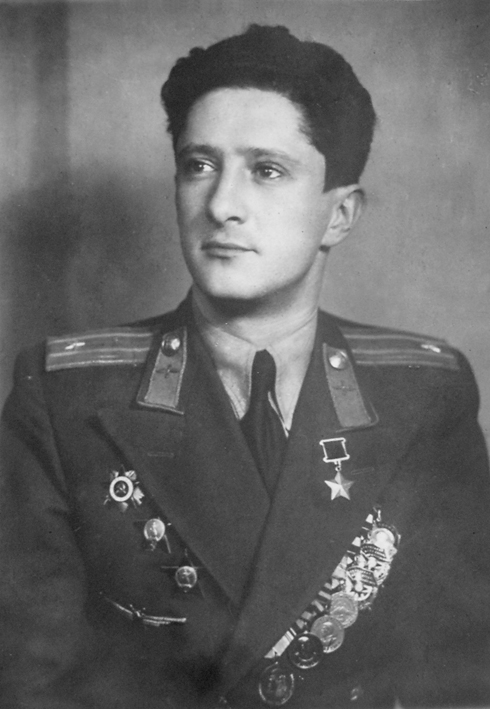Genrikh Gofman was born in 1922 in Irkutsk, Siberia. In the same year his family moved to Moscow. There Gofman graduated from a Soviet high school, while also participating in an "aeroclub". In 1940 he was conscripted into the Red Army and soon thereafter was sent to an air force school. In 1942 he graduated from the 3rd Chkalov Air Force Pilot School in the Orenburg Region (the Urals). During the first months after his graduation, he transferred IL-2 attack planes to the Stalingrad Front.
From March 1943 Gofman saw action as the pilot of an IL-2 attack plane. He fought in the skies over the northern Caucasus, the Crimea, and northwestern Russia and, later, over the Baltics as well. He took part in the liquidation of the Wehrmacht's so-called Courland Pocket in Latvia in the spring of 1945. Since attack planes usually flew at a very low altitude, they were an easy target for German' anti-aircraft guns. For this reason, for many attack-plane pilots, their first sortie was also their last one. Between 1943 and 1945, Gofman flew 168 sorties against the enemy. After his 150th sortie, Gofman arrived in Moscow with 600 shell holes in his IL-2.When the famous aircraft builder Iliushin saw how its pilot had succeeded in preserving his plane, Iliushin presented the pilot with his latest model, the IL-10. Gofman returned with this treasure to his squadron.
After his fighting over north-western Russia, in August 1944 Senior Lieutenant Gofman was awarded the title of the Hero of the Soviet Union. The description of his heroic deeds in the citation that accompanied his award consisted of 8 printed pages. Gofman also received three Orders of the Red Star, two Orders of the Patriotic War, and other military awards.
In his memoirs Gofman recalled his first sortie in eastern Prussia in January 1945. He reported over his radio: "To everyone! To everyone! To everyone! The first Jew has crossed the border of the Third Reich by plane. I am starting to bomb: [Here they come:] one… two… three…". (Folks-shtime, (Warsaw), May 5, 1965.)
After the war, Gofman was the commander of an air-force regiment. After that, he taught at the Vystrel Higher Officer Courses. He also gained a reputation as a writer. One of his works was the book "Vladimir Iliushin," a biography of the man who had given him the latest model of attack plane.
In March 1983 Gofman was, at least on paper, one of the initiators of the establishment of the Anti-Zionist Committee of the Soviet Public.
Genrikh Gofman died in Moscow in 1995.

